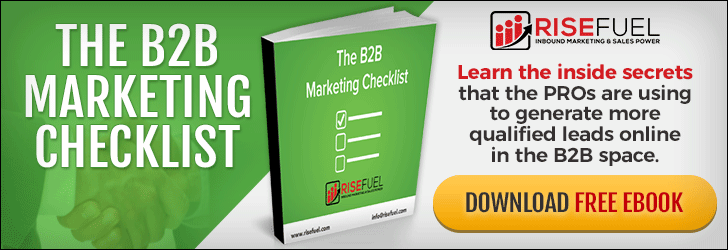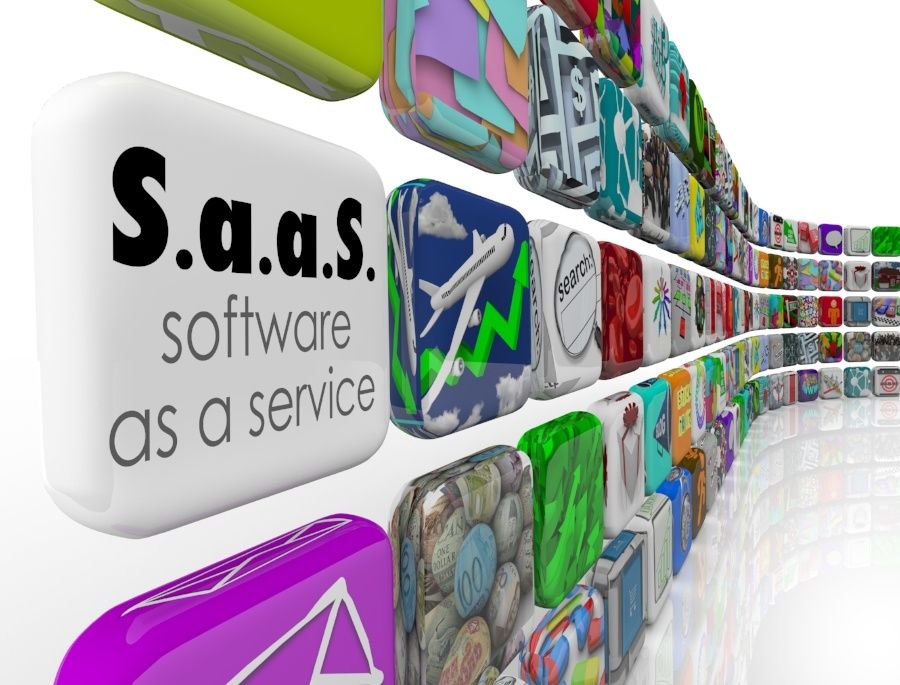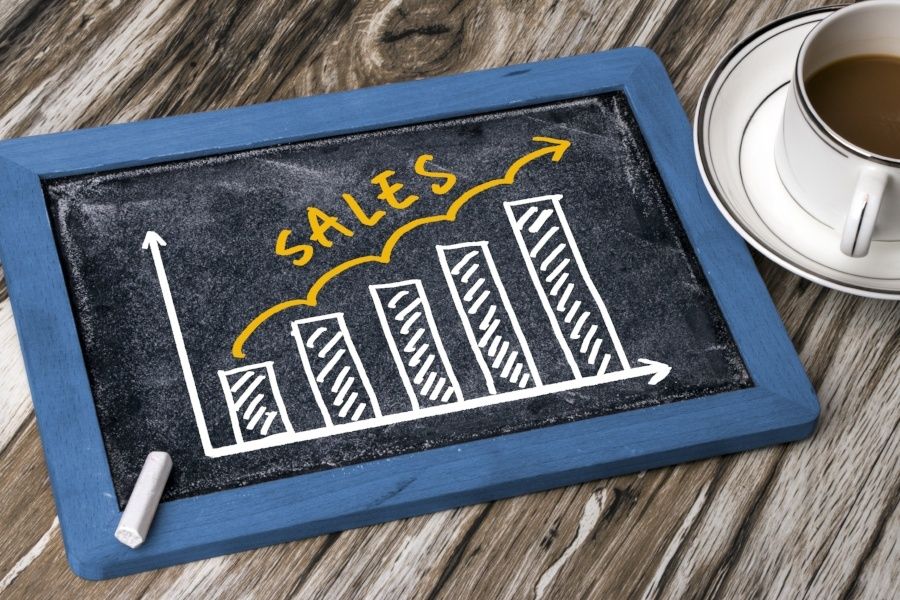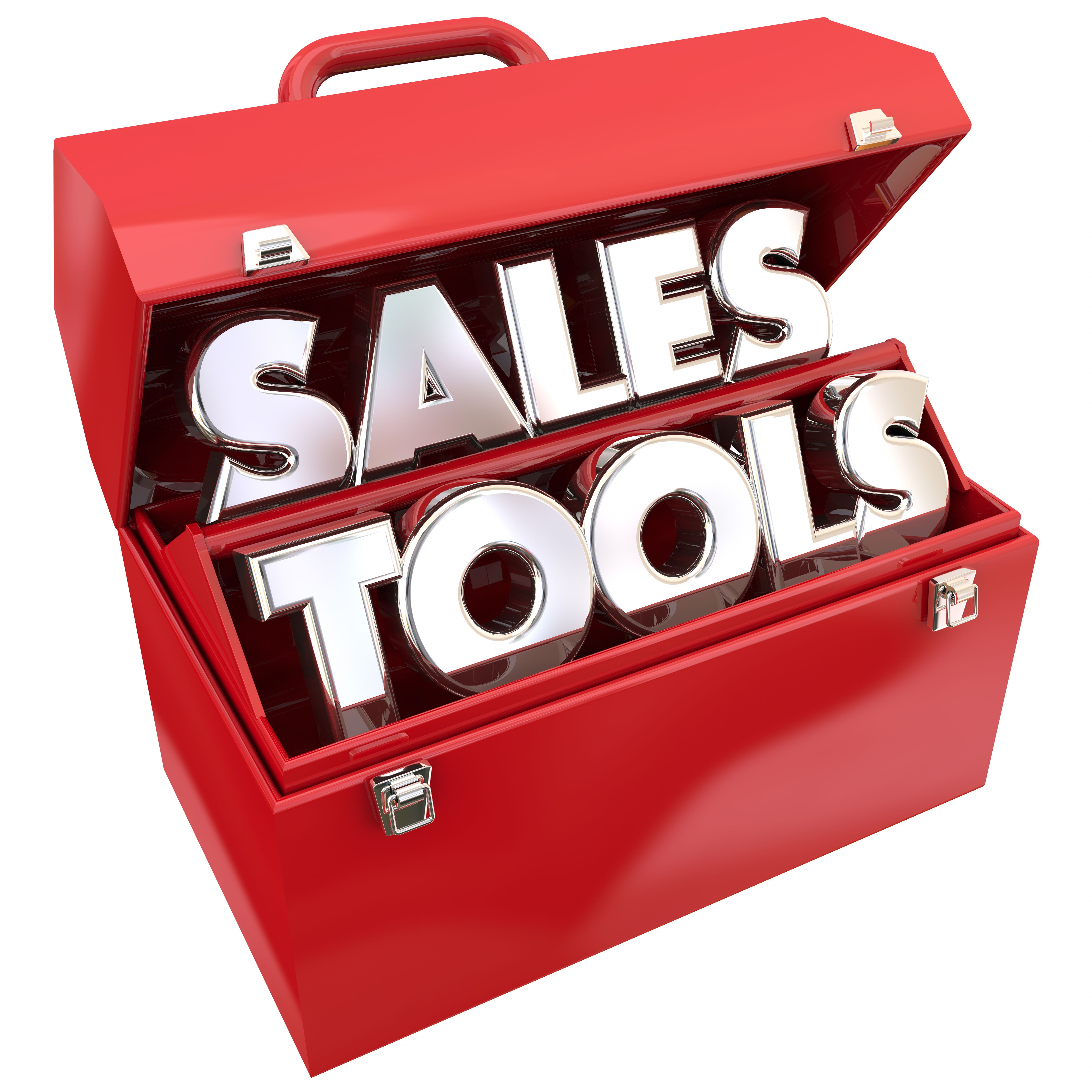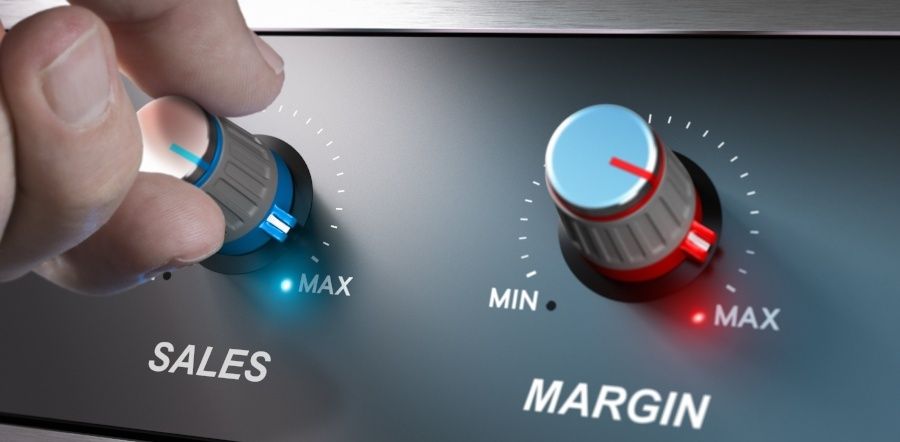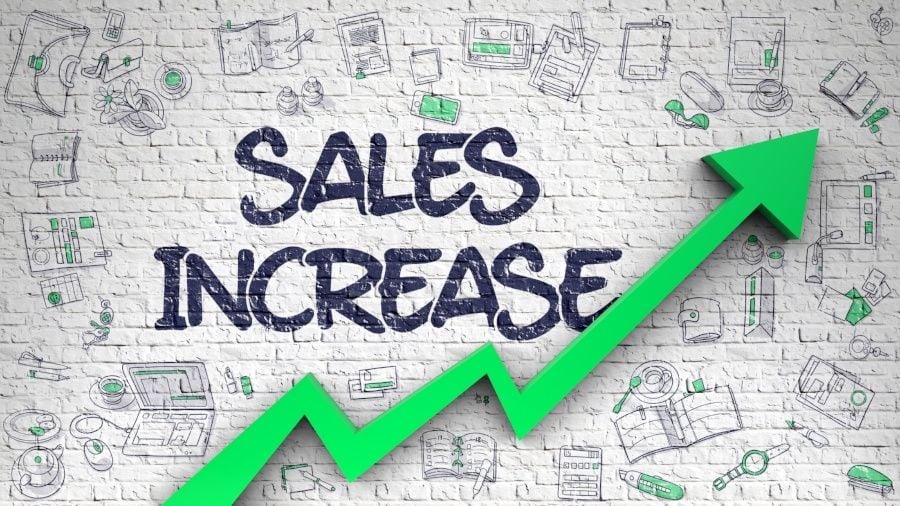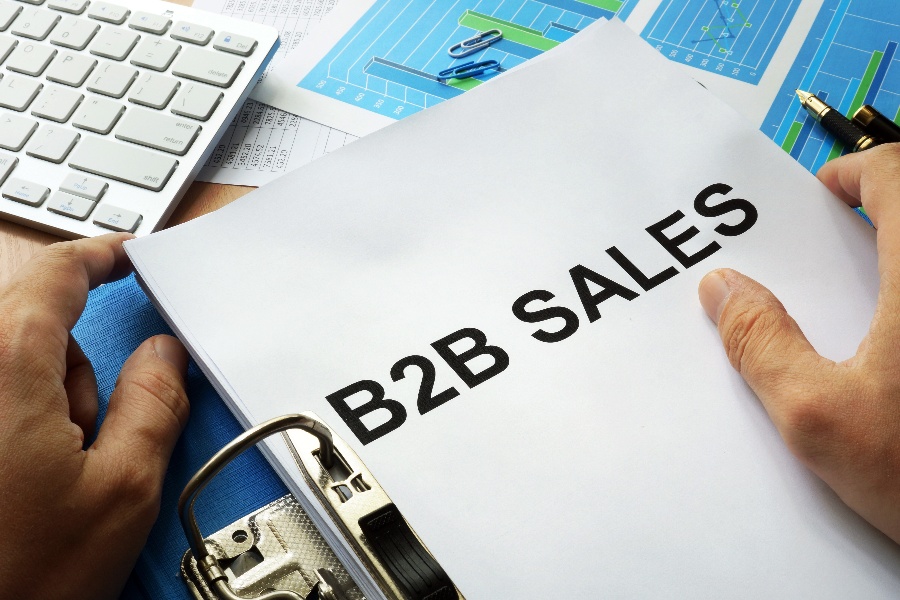
So, it’s time for you to define your organization’s sales strategy, but you aren’t quite sure where to start?
There are so many different styles, techniques, and strategies that putting them together can be daunting. Without careful thought, the strategy that you deliver to your sales reps may end up being a mishmash of strategies that can be hard to follow and recreate.Here at RiseFuel, I specialize in creating inbound marketing and outbound sales strategies for my clients. Building sales strategies is a core piece of what we do here.
No matter what kind of sales strategy you employ, there are some key traits of both your sales process and reps that will help you to be successful.
In this article, I’ll detail not only the different types of strategies that you can use to grow your business, but also provide some simple tips to help you refine your process and find success.
Together, this post will serve as a sales strategy example that I use to help my own clients.
Let’s get started.
Know Your Organizational Goals
First and foremost you have to base your sales strategy decisions on your organizational goals. Do you want to grow rapidly? Do you want slow but sustainable growth? Do you want to generate sales from a specific industry?
Knowing what your goals are will influence the choice that you make in the next step.
Different sales strategies are suitable for different goals. For instance, cold calling might not be a sustainable strategy for a small team that wants to grow slow but reliably.
However, for a company that is ready to scale and grow, cold calling might be the most effective way to quickly reach new customers.
Create Detailed Buyer Personas
Your own goals aren’t the only thing that you need to take into account when choosing a strategy. You also have to make sure that you have an ocean-deep understanding of your customers as well.
As a business owner, you might think that you know everything that there is to know about your customers. Maybe you do. But your sales reps won’t. For that reason alone, you need to look into building high-quality buyer personas.
Buyer personas are essentially a document that outlines some of the common concerns, needs, wants, and demographic information for your average customer.
You should build out a separate buyer persona for each of the different types of customers that your company serves. The more effort that you put into fleshing these out, the better of an understanding your sales reps will have.
Here’s a simple example of what a buyer persona looks like:
Choose a Sales Strategy
All sales strategies can be boiled down into two distinct categories — inbound and outbound. Then there are many individual tactics and techniques that can be used within each of the strategies.
Whether you choose inbound or outbound sales strategies will depend completely on your organization goals, marketing strategies, and your ability to generate leads reliably on your own.
If you are unable to reliably generate leads on your own, you might prefer to choose an outbound sales strategy. In outbound sales, you proactively reach out to customers and clients in order to find interested prospects.
In inbound sales, you essentially wait for prospects to come to you and show interest in your product. Inbound sales have to be accompanied by an effective inbound marketing strategy to make people aware of your business and products.
I specialize in both inbound and outbound sales. Each have their place and every situation is different.
Sometimes, I’ll use a mix of both strategies to find the perfect solution for my clients.
Source: HQ SEO
Invest in a Customer Relationship Management Solution
One of the biggest mistakes that I see companies making is being unwilling to invest in a proper customer and lead management solution.
Many companies, when I first begin working with them, are handling things through an Excel worksheet or worse — have no way to track their relationships with customers and prospects at all.
I recommend HubSpot CRM. This is the solution that I use for my own business and usually the one that I recommend to my clients.
It’s simple and effective. It also has the upside of being able to plug directly into the broader HubSpot platform if you decide to invest in it for your sales or marketing teams.
Sales Strategy Example: Pitching Tips
The hardest part of sales is...selling. Being able to refine your pitch, understand what it is that your customers want to know about your product, and find a way to position your product as a solution to their biggest problems is ultimately what it is all about.
In this section, we’ll outline a few tips that you can use to perfect your pitch, sales conversations, and sales processes to ensure that you are providing the best possible experience to your prospects while closing more sales.
Perfect Your Pitch
You should never have to go into a sales call and not know what you are going to say to the prospect. Great sales results are all about preparation.
That refers to the preparation that you do before hopping on a call with particular prospects as well as the time and effort that you put into perfecting and knowing your pitch inside and out.
Your pitch will mold to the situation. It will change to speak to different buyer personas. You’ll have to be on your toes. Rarely will you have a sales call where you go through the motions completely, in the exact order that you expected the call to go?
Knowing your pitch inside and out gives you the leeway that you need to think on your feet during sales conversations.
It allows you to continue your pitch and make changes on the fly without having to stop and think about whether or not it is the perfect fit for you.
Listen to Your Prospects
It sounds like common sense, but you would not believe how much most companies stand to gain from taking this tip to heart.
Listen. To. Your. Prospects.
Yes, you have your customer persona. You know your pitch. But ultimately your pitch is worth nothing if the things that you talk about don’t align with what the customer needs to hear in order to see your product as the solution to their problems.
Listen to their concerns. Know what their biggest problems are. Have genuine conversations with them so that you can better understand how to position your product.
Use the words that they use to frame your product. Use their pain points as benefit drivers that will propel your business forward.
Lead With Their Benefits
What will your customer get out of your product? What are the real-world benefits that they will enjoy after making their purchase? Lead with those. Those are what they want to hear and know about.
Those are, ultimately, the purchase-driving factors that will determine whether or not they believe that your product is a good fit.
Articulate the end results that they will see after purchasing your product. For me, a consultant that offers digital marketing services, I want to let my prospects know that I can help them to solve their specific digital marketing problems and grow their revenue.
A dentist might be able to help someone fix their cavities and perfect their smile.
Give your customers what they want.
Be Flexible and Agile
In this sales strategy example article, I’m giving you a lot of hard line tips that will help you to grow your sales.
But the truth is that you shouldn’t listen to every one of these tips all of the time. You still have to do what works for you. By works, I mean generates new sales.
Your process might change. Your pitch might change. The type of customers that you try to attract might change.
Utilizing an agile project management approach to build your plan can help you streamline the results.
Being willing to make changes to your system when it isn’t working for you is critical to creating ongoing success.
Use Lead Scoring
How do you know which prospects you need to prioritize? If you don’t have a way of measuring the value opportunity of each prospect then that task is impossible. You need lead scoring.
Lead scoring is the process of evaluating leads and assigning value to each one. Often, this is in the form of a letter grade or point system based on a number of attributed.
Those attributed can be, but are not limited to:
- Professional information
- Demographic information
- Company information
- Engagement
- Previous conversations
Your highest scoring leads should consistently be the ones that are turning into paying customers. Lead scoring gives you a simple but effective way to prioritize leads and know where to spend your time.
Source: Zoho
Sell Yourself with the Product
Contrary to popular belief, your sales reps are just selling your product. They are also selling themselves. Even a truly stellar product that practically sells itself won’t sell if your prospects don’t like and trust the people that are speaking to them.
They want to buy more than just a product. They want to express trust in you and invest in your relationship moving forward.
They want to trust that the person selling them the product is making recommendations in their best interest.
Trust is a three-way street. They have to trust the person selling to them. They have to trust the product, and they have to trust the company that is offering the product.
Source: Close.io
Touch Sales Qualified Leads in One Day
When a highly scored lead comes into your system (or someone directly expressed interest in buying your product), you need to get a hold of them, and quickly.
That interest can wane, and you have a limited amount of time to truly capture and hold their attention in regard to your product.
Assume that any prospect that is actively looking to buy your solution is also comparing competitors and doing research. Part of that evaluation is how responsive your team is to their requests.
If they reach out and your sales team takes a full week to get back to them, that really doesn’t bode well for your company’s customer service moving forward, in their estimation.
A fast response sales strategies ensures that you speak with prospects when they are at their most interested.
By getting in touch as quickly as you can, you’ll be able to answer questions, downplay objections, and effectively explain your product to them and connect your product to the goals that they would like to achieve.
Use Automation
In line with the previous tip, sometimes automation is the right answer for sales teams. When you can’t guarantee that you will give a fast and exciting response to prospects, you can automate your initial response email.
In fact, there are many opportunities to nurture sales prospects with automated emails that deliver valuable information to them over time.
Finding smart ways to inject automation into your sales processes is critical for long-term success. Prospecting, in particular, is an area that is perfect for automation, especially for B2B companies.
Source: SEOFocus
Always Follow Up
Once you’ve had a pitch or sales conversation with a prospect, that shouldn’t be the last time that they hear from you, even if they have decided not to buy your product.
Actually — especially if they have decided not to buy your product. You should follow up one day after a sales conversation and then continue to follow up every few days after that initial conversation to ensure that you are able to stay top of mind and create some kind of closure for both you and the prospect.
Sales Strategy Examples to Drive Growth
The examples and tips in this article are meant to give you a good overview of what putting together an effective sales strategy entails.
There are a lot of considerations to take into account when it comes to putting together an effective strategy.
Here at RiseFuel, I work with clients all around the country to help them re-shape their sales mindset and find new and innovative ways to drive growth for their business.



